|
|
|
|
|
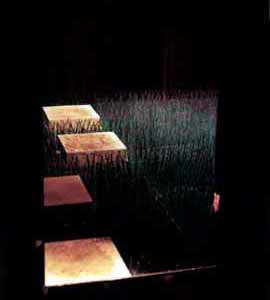 |
|
edition
Experimenta – Asssociação para a Promoção
do Design e Cultura de Projecto
direction
Guta Moura Guedes
Marco Sousa Santos
edition coordination
Levina Valentim
Inês Lamim
english version
João Duarte Ferreira
graphic design
Mário Feliciano
|
|
 |
 |
 |
 |
 |
|
|
|
 |
|
THE BOOK
The object/book in these pages is but one of many possible reflexes
of experimentadesign99. A reflex of this or maybe the other side
of the mirror.
Guta Moura Guedes
One of the aims of experimentadesign is to reject what is predictable
and move forward wherever the creative impulse takes us. This
book is but a very small part of everything that happened during
the first edition of experimentadesign and has been thought of
as a part of it. It is open and «unfinished», a book
that retains its contents open, just like the event that is behind
it
Marco Sousa Santos
|
|
| |
|
|
|
|
| |
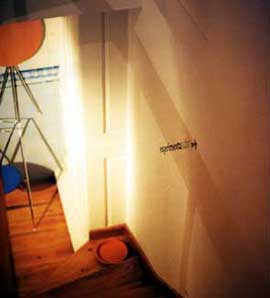 |
|
SPACES |
|
| |
|
Space (derived from the Latin word spatiu)
means an undefined extension, area, interval, length, duration,
place or capacity.
The streets are the home of the collective. The collective is
an essence forever restless, eternally in motion, that, between
the building façades, endures, experiments, learns and
feels just like the individual protected between four walls.
Walter Benjamin
Man interprets space. This interpretation is born from confronting
two notions of space that complement each other: individual space,
(what I am); and the other, exterior space, collective space,
the world (my possible ones).
Diogo Teixeira
|
|
| |
|
|
|
|
| |
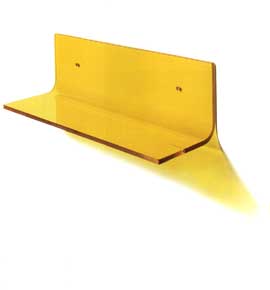 |
|
OBJECTS |
|
| |
|
Object (derived from the Latin word objectu meaning «thrown
forward») everything that affects our senses; material object;
matter; subject; end; purpose; agent; motive; cause; motive for
an action, a feeling; philosophy: what is thought or represented
and distinct from the act of thought; that which is considered
as independent from the knowledge possessed by the thinking being.
Do not touch immediate objects.
Harmony burns.
No matter how light is a teapot or cup,
All objects are mad.
Herberto Helder
In the anthropological discourse of the last 20 to 25 years we
have witnessed the progressive importance of the study of artefacts.
These have become an important object of study. This fact acknowledges
the omnipresence of objects in our lives illustrating how they
can define the society that creates them. Most of all this also
shows the growing separation between concept-production and consumption,
in itself a characteristic of industrial production, as the unexpected
effect of reinforcing the consumers role in the process of definition
of objects. In certain circumstances, people can appropriate industrial
objects and use in the creation of their own image. A similar
process based on a creative approach to objects has been happening
in the field of Design. Since the 70’s that in Japan consumers
are defined as «life designers». This definition is
based in the understanding that a large part of the population
expresses their needs autonomously rather than as a passive reaction
to what happens in the market. In the recently published design
anthology organised by R. Buchanan and V. Margolin the authors
suggest a broad notion of design, one that includes the choices
that people make for their lives and the use that they find for
whatever the market has on offer. Many times designers and manufacturers
create objects that consumers will use in unexpected ways. This
creates a challenge to all industrial designers: how to incorporate
in their work this unexpected dimension derived from the appropriation
of objects?
|
|
| |
|
|
|
|
| |
 |
|
DESIGNERS AND SOCIETY |
|
| |
|
Society (derived from the Latin word
societate) a group of people that share the same origins and laws;
relation-ships amongst people, affiliation, association; partner-ship,
participation and socialisation.
Design as strategic activity – firm identity, offer reconfiguration
and local-global development
Ezio Manzini, 3.664 characters
[open
text]
1. Have you been here before 2. No this is the first time
There is nothing more boring than a conference speaker.
Robert Wilson, 3.381 characters
[open
text]
Colours from Mariscal
The story begins with Black, which little by little is invaded
by numerous white, lightning points, transformed into types, numbers
and symbols.
Cristiana Pena, 2.621 characters
[open
text]
|
|
| |
|
|
|
|
| |
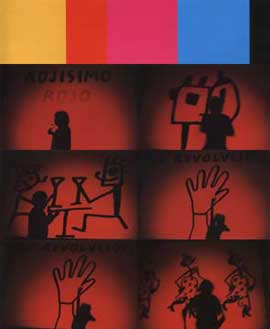 |
|
OLD QUESTIONS, NEW ANSWERS? |
|
| |
|
What is your definition of Design?
Is Design an expression of art?
Is Design a craft for industrial purposes?
What are the boundaries of Design?
Is Design a discipline that concerns itself with only one part
of the environment?
Is it a method of a general expression?
Is Design a creation of an individual?
Is Design a creation of a group?
Is there a design ethic?
Does Design imply the idea of products that are necessarily useful?
Is it able to cooperate in the creation of works reserved solely
for pleasure?
Ought form to derive from the analysis of function?
Can the computer substitute for the designer?
Does Design imply industrial manufacture?
Is Design used to modify an old object through new techniques?
Is Design used to lip up an existing model so that it is more
attractive?
Is Design an element of industrial policy?
Does the creation of Design admit constraint?
What constraints?
Does Design obey laws?
Are there tendencies and schools in Design?
Is Design ephemeral?
|
|
| |
|
|
|
|
| |
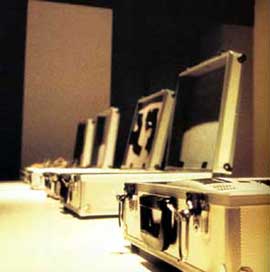 |
|
LAB |
|
| |
|
Laboratory (derived from the Latin word
laborare through French laboratoire) a place where scientific
experiments are carried out; a place where changes occur in a
large scale.
Design/Art – Art/Design
The notion of design is seen as an autonomous process intimately
associated to the Industrial Revolution, Modernism, mass production
and consumerism. According to this notion design means the creation
of objects with a view to mass reproduction.
Rui Afonso Santos, 17.934 characters
[open
text]
Proposal for a new approach towards design
Nowadays the barriers that once existed between different creative
fields have been eroded. Artists have adopted icons associated
with consumption and their work shows increasing influence of
other subjects such as design and architecture.
Chloé
Braunstein, 8.172 characters
[open
text]
|
|
| |
|
|
|
|
| |
|
|
IN MOVEMENT |
|
| |
|
|
Movement (derived from the Latin word
movere) a shift in space in accordance with time; the act of moving
or to move; dislocation; ideas in progress; impulse, stimuli;
alteration; philosophy: from potency to act.
|
|
 |
 |
 |
 |
 |
|
